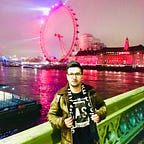Using AI to Generate Art: An Introduction to Google’s DeepDream Algorithm
Artificial intelligence is a powerful tool that is changing the way we create and experience art. One example of this is Google’s DeepDream algorithm, which uses machine learning to generate surreal and abstract images. In this article, we’ll introduce you to DeepDream and show you how it works.
What is DeepDream?
DeepDream is a neural network algorithm that was developed by Google to generate images that are similar to the ones it was trained on. The algorithm works by processing an image through a deep neural network and enhancing the patterns and structures that the network identifies.
The result is a surreal and abstract image that looks like it was dreamed up by a computer. These images are sometimes referred to as “hallucinations” because of their dream-like quality.
How Does DeepDream Work?
To understand how DeepDream works, it’s important to first understand how neural networks work. Neural networks are a type of machine learning algorithm that is inspired by the structure of the human brain. They are composed of layers of interconnected nodes, which process information and generate output.
In the case of DeepDream, the neural network is trained on a large dataset of images. This training allows the network to learn the patterns and structures that are common to these images.
When an image is an input into the network, the algorithm processes the image through the layers of the neural network. As it does so, it identifies patterns and structures that are similar to the ones it was trained on.
The algorithm then enhances these patterns and structures, which can result in surreal and abstract images that are unlike anything you would see in real life.
Using DeepDream to Generate Art
DeepDream has been used by artists to generate unique and surreal images that can be used in a variety of ways. For example, artists can input an image of a landscape, and the algorithm will generate a surreal version of the image that looks like it was dreamed up by a computer.
Artists can also use DeepDream to create unique patterns and textures that can be used in other forms of digital art, such as graphic design and animation.
Conclusion
DeepDream is an example of how artificial intelligence is changing the way we create and experience art. The algorithm allows us to generate surreal and abstract images that are unlike anything we would see in real life.
Whether you’re an artist looking for new ways to create and explore your creativity, or you’re simply interested in the ways that AI is changing the art world, DeepDream is an exciting tool to explore. With its ability to generate unique and abstract images, the possibilities for using DeepDream to create art are endless.
Here are some references for further reading on DeepDream and AI-generated art:
- “Inceptionism: Going Deeper into Neural Networks” by Alexander Mordvintsev, Christopher Olah, and Mike Tyka, available at https://ai.googleblog.com/2015/06/inceptionism-going-deeper-into-neural.html
- “Google’s Deep Dream project makes some fascinatingly surreal art” by James Vincent, available at https://www.theverge.com/2015/7/1/8870093/google-deep-dream-code-artificial-neural-networks
- “DeepDream: The psychedelic AI art that’s sweeping the internet” by Alex Hern, available at https://www.theguardian.com/technology/2015/jul/03/deepdream-google-artificial-intelligence-dreams
- “The AI Art Gold Rush: Using Artificial Intelligence to Generate High-Value Art” by Christies, available at https://www.christies.com/features/A-collaboration-between-two-artists-one-human-one-a-machine-9332-1.aspx
- “The Art of Artificial Intelligence: GANs and Beyond” by Jason Bailey, available at https://www.christies.com/features/A-collaboration-between-two-artists-one-human-one-a-machine-9332-1.aspx
